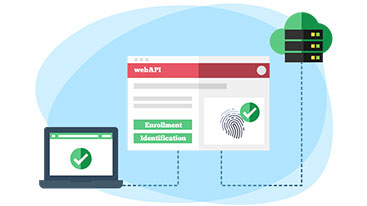Why 2014 Will Not Be A Breakthrough Year For The Biometrics Industry
The end of the year is a time to pause and reflect on the 12 months passed as much as it is a time to prognosticate and predict what may come in the year ahead.
If this headline written by a biometric identification vendor caught you by surprise, then you may be interested to know the reasons that we predict that 2014 will not be a breakthrough year for the biometrics industry. For starters, the biometrics industry has already broken through to the mainstream, so we shouldn’t expect the coming year to be revolutionary insofar as the wonder and surprise that biometrics is slowly overtaking more traditional forms of identification as we know it — PINS and passwords for example.
Instead, expect to see continued proliferation of using biometrics for individual identification on a larger scale, thanks in large part to the recent inclusion of fingerprint biometrics on the latest generation of Apple iPhones that lifted the industry up, an event that vaulted the idea of biometrics from mainly commercial and governmental applications to more personal in nature in the name of convenience and security. It was Apple’s use of biometrics that brought the idea of using this futuristic technology to the kitchen table and water cooler conversations around the world as a viable means of replacing antiquated and unsecured methods of identification.
The increased use of biometric technology for personal use will surely be a contributing factor to the rapid growth of the industry but the flip side of the growth coin will see more government and military establishments using more sophisticated (including portable biometric devices) to identify individuals in a host of environments including, but not limited to:
- border control
- voter registration
- national ID cards
- ePassports
- patient identification in healthcare
We also expect to see rapid growth of using biometrics for identification to continue in selected industries that are particularly vulnerable to security breaches and identity theft such as banking, healthcare, and retail just to name a few. 2014 will also see a precipitous rise in multi-factor authentication, that is, the use of two or more authentication factors to decrease the probability that an individual is trying to faslify their identity. Biometrics has surged as a technology of choice in the push towards multi-fctor authentication, and we expect that to continue in the year ahead.
The rise of biometric modalities outside of more traditional ones like fingerprinting will be another important aspect of biometrics maturing in 2014. It is well known that consumers prefer using biometric technology not commonly associated with criminals and less invasive than fingerprinting so expect to see a rise in new or lesser known biometric technologies as vendors begin to move away from more traditional modalities. We have already witnessed a sharp increase in voice biometrics for banking security over the past year, a rise in the use of iris biometrics for patient identification in healthcare, and a significant uptick in the use of facial recognition for the retail industry, among others.
Add to this an increase in consumer willingness to use biometrics for more security and convenience and the ingredients leading to the maturation of the biometrics industry are starting to take shape.
No, 2014 will not be a breakthrough year for biometrics. The industry has already broken through. Instead, expect to see the natural progression of the technology via customizable platforms that mirror end user needs and requirements. Expect to see more biometric solutions developed through human factor engineering to produce systems that are uniquely designed with the end user in mind. Expect to see “breakthroughs” in the biometrics industry, but not so much from the collective consciousness that the technology exists and what it has the capability to accomplish.
What are your expectations for the biometrics industry as we look towards the new year?











